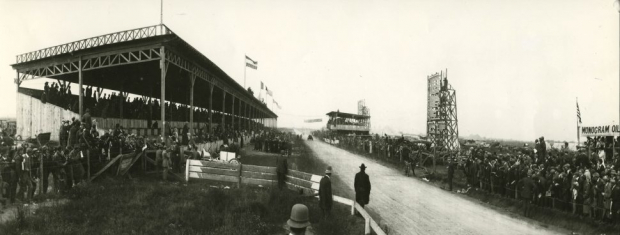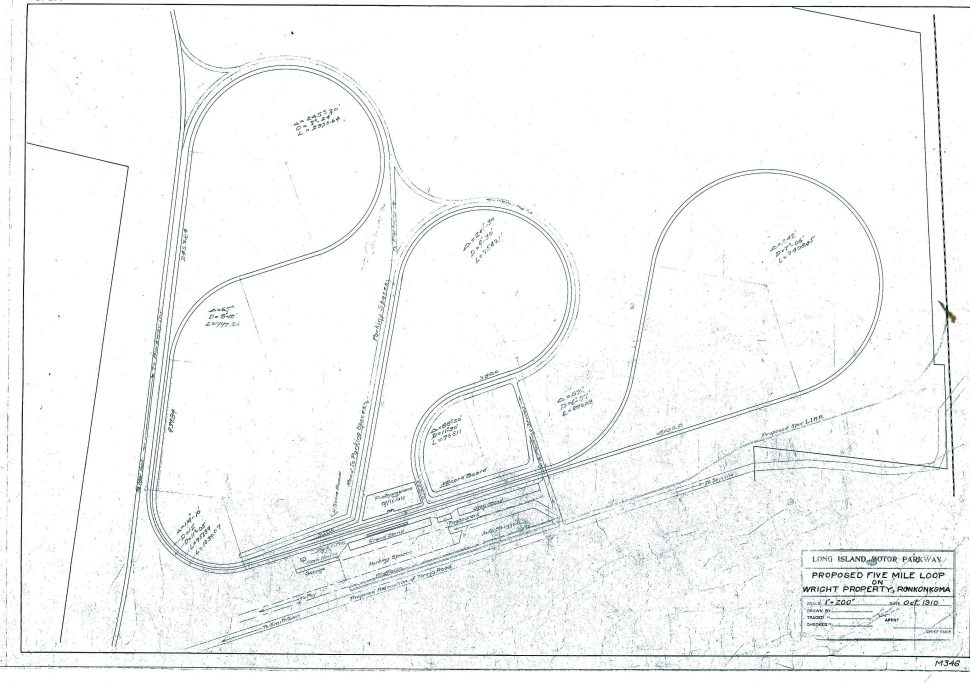Hemmings: Ronkonkoma: the never-was speedway that could have brought Indianapolis-scale racing to LI

With the assistance of VanderbiltCupRaces.com, Daniel Strohl of Hemmings Daily has written an article on the planned Ronkonkoma Motor Speedway.
Enjoy,
Howard Kroplick
Ronkonkoma: the never-was speedway that could have brought Indianapolis-scale racing to Long Island
Daniel Strohl on Oct 24th, 2017 at 4pm
Hemmings Classic Car
Images courtesy Vanderbilt Cup Races.
A “mecca of motordom” is how one pundit put it. Nearly 900 acres of now prime Long Island real estate dedicated to racing automobiles at a time before many people had even seen one. Backers of the Ronkonkoma speedway envisioned a motorplex of a size that would dwarf the fledgling speedway in Indianapolis, recently unearthed documents show, but that size ultimately ended up preventing the track from ever becoming reality.
The effort to build the speedway, according to documents compiled by Howard Kroplick of the Vanderbilt Cup Races blog, grew out of William “Willie K.” Vanderbilt II‘s work to establish not only the eponymous race but also the Long Island Motor Parkway. The race, first run in 1904 on public roads, quickly drew the ire of Long Island residents and public officials; as early as 1906 the American Automobile Association demanded that Vanderbilt not conduct the race on public roads.
To do so, Vanderbilt began construction on the parkway as a private limited-access toll road extending from Queens to, initially, Bethpage. It opened in 1908 and for three years hosted part of the Vanderbilt Cup race, though the races still relied on public roads for some sections. Only after the New York state legislature banned racing anywhere but on a dedicated race track did Vanderbilt move the race to other venues throughout the country during the Teens.
He very nearly didn’t have to. As Kroplick pointed out, Vanderbilt had to purchase small tracts of land to construct the parkway, but he made one unusually large purchase of about 890 acres near Ronkonkoma in November 1906. While he briefly considered building a loop of the parkway in Hempstead Plains — nowadays Levittown — to use for a 5.5-mile race course in early 1909, a year later he developed a grander plan for a dedicated track on the Ronkonkoma tract.
The plan called for either a three-mile or a five-mile track: the first in a sort of tri-oval shape; the second of a more elaborate shape incorporating three loops, a hairpin, some sweeping turns, and a few good straightaways. While both would have included grandstands, the latter would have included garages, a scoreboard, officials and photographer stands, and would have accommodated as many as 53 vehicles on the track at once.
(As a means of comparison, the Indianapolis Motor Speedway, built in 1909, measures 2.5 miles and these days accommodates 33 cars for the Indianapolis 500.)
As A.R. Pardington, one of Vanderbilt’s associates, wrote in a New York Times article outlining the argument for the speedway, it would place New York on the auto-racing map and would be “the one spot where thousands would go weekly to witness contests of speed and endurance, with the knowledge that they would be rewarded by seeing real automobile racing under real and actual road conditions.”
While Pardington estimated that the speedway would cost half-a-million dollars, estimates came back well under that figure: $260,000 for the three-mile and $375,000 for the five-mile.
A year later, Vanderbilt extended the parkway out to Ronkonkoma, but the plans for the speedway stalled. As Pardington wrote, investors balked and real estate agents proved troublesome to deal with. Meanwhile the Vanderbilt Cup races logged another two deaths in the 1910 event and Carl Fisher proved able to attract international talent and the country’s most technologically advanced cars to his oval in Indianapolis.
Vanderbilt held out hope for the Ronkonkoma speedway as late as 1913, but right-of-way issues dogged him even then. The parkway held on to the 890 acres in Ronkonkoma until late 1937, when real estate developer Walter Shirley bought much of the land and sold it off in quarter-acre lots.
The Long Island Motor Parkway closed a year later when the state, owed back taxes, bought it. The Vanderbilt Cup continued through 1916 but never returned to the parkway.


Comments
Intriguing. As someone who grew up in Lake Ronkonkoma, this is brand new to me. One can only imagine how different the area would have developed had the project come to fruition. Thanks for the detective work.
Once again playing “I am SOOO old”, I remember my mother taking me out to Shirley (by LIRR steamer) in early 1945, thence by cab to Matic Acres to look at beachfront property, just ravaged by a hurricane. I remember an endless expanse of cleared scrub land with curbs and fire hydrants everywhere. Sure ain’t like that no mo’! As to “the New York state legislature banned racing anywhere but on a dedicated race track”, how does one then account for the post-war Watkins Glen races, very much on local roads to 1956? Payola? Sam, III
How about the Bridgehampton road races in the early 50s that stopped road racing on public roads. The law change is why they built the track out there. Is there a map showing the location of the proposed track?